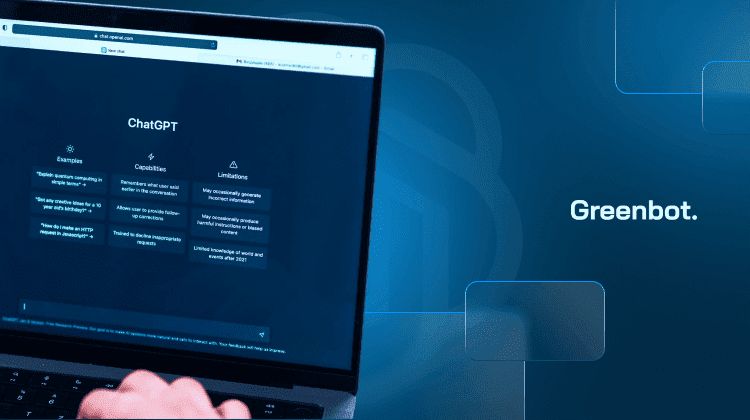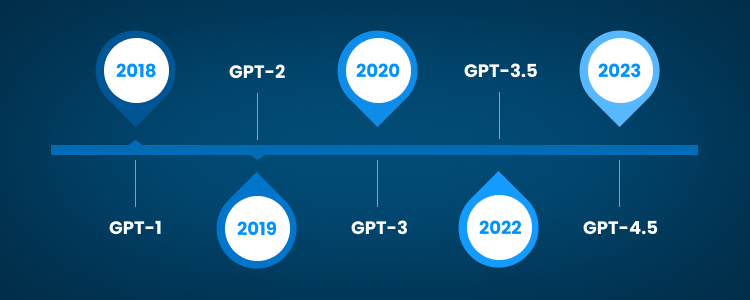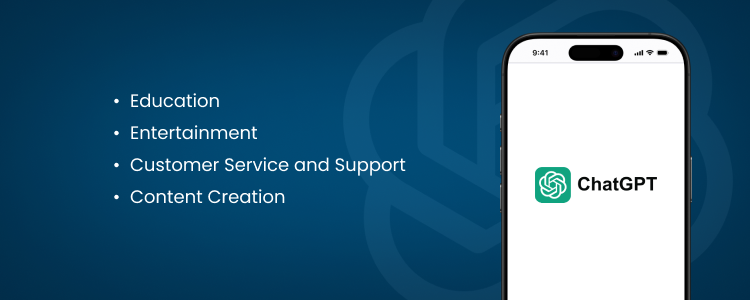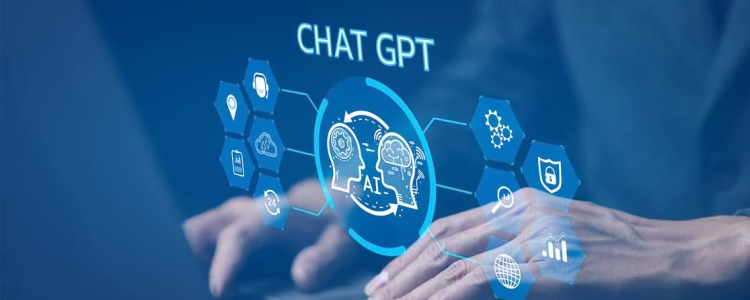
ChatGPT, by OpenAI, is an AI chatbot that uses advanced natural language processing (NLP) to facilitate human-like conversations. This technology assists with customer support, education, and creative projects. By providing real-time responses, ChatGPT improves productivity and streamlines workflows across various industries.
This article reviews how ChatGPT works, its real-world applications, and its strengths and weaknesses.
Let start!
What is ChatGPT?
ChatGPT is an AI chatbot that leverages Generative Pre-trained Transformer (GPT) technology. It creates human-like conversations through NLP and machine learning.
ChatGPT’s origins lie in OpenAI’s mission to advance AI. It is trained on extensive datasets to generate accurate and context-aware responses.
According to Partha Pratim Ray, ChatGPT has transformed numerous industries. These include customer service, healthcare, and education.
The Evolution of ChatGPT

The journey of ChatGPT began with GPT-1, the latest version of OpenAI’s initial language model, which was introduced in 2018. This version demonstrated basic language understanding and text generation capabilities. It was limited in scope. However, it showed the potential of natural language processing (NLP) transformer-based architectures, laying the groundwork for later advancements in human language interaction.
GPT-2, released in 2019, marked a significant leap forward. It was trained on a larger dataset, improving contextual understanding and response quality. GPT-2 could generate coherent, creative text that sparked interest in AI’s uses. However, concerns about misuse led OpenAI to release it gradually to the public.
The most notable advancements came with GPT-3 and GPT-4, launched in 2020 and 2023, respectively. GPT-3 introduced powerful text generation capabilities, making it highly versatile. With 175 billion parameters, it excelled at complex tasks like content creation and coding assistance. GPT-4 further enhanced understanding, accuracy, and multilingual support. These iterations solidified ChatGPT as a cornerstone of AI-driven communication.
How ChatGPT Works
ChatGPT operates on OpenAI’s GPT architecture, a type of large language model (LLM) powered by advanced AI technology. It uses specialized algorithms to find patterns in data sequences. This enables ChatGPT to generate human-like responses effectively.
The neural architecture of ChatGPT is based on deep learning techniques. It uses transformer networks. They predict the next word, sentence, or paragraph by analyzing patterns in their training data.
ChatGPT’s training process begins with generic data to develop foundational language skills. It then shifts to specific tasks using supervised and reinforcement learning. This includes conversation modeling, where human trainers rank the chatbot’s responses. This feedback helps guide the model in improving its accuracy over time. Additionally, users can provide feedback to help refine the chatbot’s future capabilities.
ChatGPT can do many tasks, from answering questions to generating content. The free version provides limited access to GPT-4o mini. In contrast, ChatGPT Plus users benefit from enhanced GPT-4 features. These advanced models can do complex tasks with great precision.
Training Methodology
ChatGPT starts its training with supervised learning. Human trainers provide labeled data to teach basic language skills. Trainers create example conversations and rank possible responses to guide the model. This helps ChatGPT learn how to generate accurate, human-like replies. The supervised phase ensures the model starts with a strong understanding of natural language basics.
In the next phase, reinforcement learning takes current data and improves the model further. Human trainers evaluate the model’s outputs and assign rankings to responses. This creates a reward system that helps ChatGPT identify the best possible answers. Over time, this process improves ChatGPT’s ability to give relevant, accurate answers in various scenarios.
ChatGPT is trained using massive datasets that include websites, books, and articles. These datasets provide a broad foundation of knowledge on various subjects in human language. For specific uses, the model is fine-tuned with targeted data. This ensures it can handle tasks like customer support or creating educational content.
How to Use ChatGPT
- Access ChatGPT via OpenAI’s Platform. Visit OpenAI’s official website or download an app integrated with ChatGPT. Compatible tools include popular platforms like productivity apps and customer service systems.
- Create an Account and Choose a Subscription. Sign up for a free account using your email address. For additional features, upgrade to ChatGPT Plus, which provides access to GPT-4 and priority service.
- Interact Using Prompts for Various Use Cases. Type your queries or commands as prompts in the chat window.
- Craft Effective Prompts for Better Results. Be specific and clear with your prompts to get more accurate responses. For example, include context or desired outcomes in your queries.
- Explore Features and Integration Options. Discover additional features like plugins or API integrations. Connect ChatGPT with other tools, like customer support or educational software, for better use.
Applications of ChatGPT

ChatGPT’s applications are transforming how businesses interact with customers and streamlining workflows. In customer service, it automates responses and handles inquiries, offering support around the clock.
Marketing teams use ChatGPT to create content, generate ideas, and draft personalized messages. Its scalability makes it an invaluable asset for businesses of all sizes.
In education, ChatGPT enhances learning. It serves as a tutor, answers questions, and simplifies complex topics. It helps students write essays, prepare presentations, and understand new concepts. Educators also use it to create lesson plans or craft engaging learning materials. ChatGPT’s adaptability makes it an excellent resource for both students and teachers.
ChatGPT can write scripts, create game stories, and generate project ideas in entertainment. Authors and content creators use it to brainstorm plots or write engaging content. ChatGPT contributes to interactive storytelling in gaming, offering players immersive, dialogue-driven experiences. Its ability to spark creativity makes it a valuable tool in the entertainment industry.
ChatGPT also supports personal development and productivity through its applications. Individuals use it to schedule, draft emails, or learn new languages. It can assist with creative hobbies like writing poetry or developing recipes.
Customer Service and Support
ChatGPT can automate responses and improve customer interactions in support roles. Businesses use ChatGPT to handle inquiries, resolve common issues, and provide instant support 24/7. It can engage customers quickly, reducing response times and improving satisfaction. Its ability to handle multiple queries simultaneously ensures efficiency without compromising quality.
Automating responses with ChatGPT helps businesses save time and resources. It can answer FAQs, guide users, and troubleshoot basic issues. By handling repetitive tasks, ChatGPT enables human agents to focus on more complex questions and high-priority matters. This division of labor boosts productivity and streamlines operations.
ChatGPT also improves the personalization of customer interactions. It uses data to provide context-aware responses tailored to individual needs. Businesses can integrate ChatGPT into chat platforms or websites for seamless communication. This improves user experience by delivering consistent, helpful, and efficient service. Its ability to adapt makes it a valuable tool for improving customer support systems.
Content Creation
ChatGPT excels at content creation. It helps writers, marketers, and businesses generate content quickly and efficiently. It drafts articles, blogs, and reports for various audiences. ChatGPT also ensures the content meets professional standards by offering clear, context-aware responses. This makes it a valuable tool for anyone, saving time and effort.
Marketers rely on ChatGPT for marketing materials like emails, social media posts, and ads. It helps create engaging and persuasive copy tailored to specific audiences. By analyzing user input, ChatGPT ensures the messaging is creative and relevant. Its flexibility allows it to handle diverse needs, from short captions to detailed promotional content.
Beyond traditional writing, ChatGPT supports creative tasks like scriptwriting, storytelling, and idea brainstorming. Authors and creators use it to develop plots, write dialogue, or refine concepts. Its ability to team users to produce unique and imaginative content makes it a key tool for creative professionals.
Benefits of ChatGPT
- Efficiency: ChatGPT processes and responds to queries quickly. This saves users time and helps streamline workflows.
- Scalability: It handles multiple tasks and interactions at once, making it suitable for businesses of all sizes and industries.
- User-Friendly Interaction: ChatGPT’s design is simple and accessible, allowing users with varying tech skills to interact easily.
- Cost-Effectiveness: Automating repetitive tasks with ChatGPT helps reduce costs. It allows businesses to focus resources on complex challenges.
- Personalization: ChatGPT tailors responses by analyzing user input and context. This improves engagement and customer satisfaction.
Challenges and Limitations
One major challenge of ChatGPT is the ethical concerns surrounding its use. The model can unintentionally generate harmful, misleading, or inappropriate content. Without proper safeguards, such responses may cause harm or spread misinformation. To tackle this issue, we must ensure responsible use and deploy strong content moderation systems.
Another significant limitation is the potential for misuse of ChatGPT. Individuals or organizations may exploit it to create spam, phishing scams, or deceptive content. These malicious uses can undermine trust in AI tools. OpenAI and similar developers must implement security measures and user guidelines to reduce the risk of misuse.
Biases in responses also remain a persistent issue. ChatGPT is trained on vast datasets that may contain biased information, which can lead to unfair or discriminatory outputs. This limit reflects its training data. It also shows the need for diverse, high-quality datasets to reduce bias and improve accuracy.
ChatGPT’s performance also depends heavily on the quality of its training data. Poor or outdated data can lead to inaccuracies, lack of context, or irrelevant responses. Additionally, it struggles with tasks requiring deeper reasoning or niche expertise.
ChatGPT vs. Other Chatbots
ChatGPT offers conversational flexibility and ease of use. Google’s Bard, on the other hand, excels at providing real-time, fact-checked responses by integrating with Google Search. ChatGPT is popular for creative tasks like content writing. Bard focuses on delivering up-to-date, factual information. Both serve unique purposes depending on user needs.
Microsoft’s AI tools help with productivity. They can draft emails and summarise documents. ChatGPT provides more versatility for creative work, coding, and detailed question-answering. Microsoft’s tools excel at integrating with Office apps. ChatGPT is more adaptable for broader uses. Each tool effectively caters to specific tasks.
The difference in data access is a key factor. Bard benefits from real-time search integration, ensuring accurate and timely responses. ChatGPT, trained on old datasets, may lack the latest info. But, it compensates with natural, engaging replies. The choice often depends on the importance of up-to-date versus conversational responses.
ChatGPT offers a free version, while its premium plan unlocks advanced features. Bard and Microsoft tools are often tied to their ecosystems, requiring user integration. ChatGPT is ideal for users seeking conversational adaptability. Bard and Microsoft excel when real-time updates or productivity are the priority.
Future of ChatGPT

The future of ChatGPT promises exciting advancements as AI technology evolves. Upcoming improvements include better language understanding and making responses more accurate and reliable. Researchers are working to reduce biases and improve contextual awareness. A study conducted by David Baidoo-anu and Leticia Owusu Ansah highlights ChatGPT’s potential for interdisciplinary research and enhanced support in education.
Integration with everyday tools is another key focus. ChatGPT will likely be in virtual assistants, productivity apps, and customer service tools. These integrations aim to streamline workflows and make the tool more accessible. Researchers are also exploring multimodal capabilities. They want to enable ChatGPT to process text, images, and audio. This would create more engaging user experiences.
Future versions of ChatGPT will focus on personalization and ethical improvements. Bias reduction and enhanced safety measures will ensure fairness and transparency. ChatGPT’s ability to tailor responses to individual users will also improve. These advancements will make ChatGPT more reliable and impactful across diverse applications.
Ethical Implications
Privacy concerns are a key ethical issue with Chat GPT. The system processes sensitive data, such as personal or financial information. Without proper safeguards, this data can be exposed to security risks. Strong privacy measures like encryption and data protection compliance are necessary. These steps are critical to maintaining user trust and preventing unauthorized access.
Another challenge is the risk of misinformation. ChatGPT can create believable but wrong information. This can have serious consequences in fields like healthcare and public policy. It can also be misused to create fake news or impersonate individuals. Content moderation, user accountability, and other safeguards are essential to reduce these risks.
The absence of AI regulation adds to ethical concerns. ChatGPT’s outputs often lack transparency, making accountability difficult. Clear guidelines are needed to address bias, ensure fairness, and prevent unintended consequences. Regulations must also prioritize transparency and ethical deployment. These steps are crucial to mitigating the risks of advanced AI models.
FAQs about ChatGPT
How does ChatGPT differ from other AI models?
ChatGPT is designed for conversational AI. It focuses on human language to generate natural and context-aware responses. It effectively handles tasks like content creation and problem-solving. This accessibility helps users across various applications and industries.
Is ChatGPT free to use?
Yes, the ChatGPT website offers a free version for all users. However, free users have limited access to advanced features and models. Upgrading ChatGPT Plus unlocks premium benefits. These include priority access to the GPT-4 model, faster response times, and better capabilities.
What are the primary applications of ChatGPT?
ChatGPT is widely used in customer service, education, and content creation. It helps answer questions, write reports, and generate images. It also creates AI text for marketing. Industries use ChatGPT to automate workflows and improve productivity by streamlining communication.
Can ChatGPT generate accurate and reliable information?
ChatGPT generates accurate responses based on its training data. However, it may occasionally provide outdated or incorrect information. Verifying outputs for tasks requiring up-to-date information or critical accuracy is essential. OpenAI continues to improve its reliability through updates.
How secure is data shared with ChatGPT?
OpenAI implements strict security measures to protect user data. However, users should avoid sharing sensitive personal or financial information. Data shared with the OpenAI account ChatGPT is not stored long-term, ensuring privacy and reducing risks of misuse.
Who owns ChatGPT?
ChatGPT is developed and owned by OpenAI, a leading AI research and development organization. OpenAI continues to innovate and enhance ChatGPT, making it a powerful tool for individuals and businesses.
Conclusion
ChatGPT is a powerful AI tool that creates realistic conversations using NLP. It assists with answering questions, drafting content, and automating support. Built on GPT technology, it’s used across industries to improve communication and productivity. Its versatility makes it essential for businesses and individuals seeking efficiency and innovation.
While effective, ChatGPT has limitations like biased output, misuse risks, and occasional inaccuracies. These issues stress the need for a large language model for ethical use and ongoing improvements. Developers continue refining their responses and adding safety measures. Used responsibly, ChatGPT boosts creativity and streamlines tasks. It improves user experiences in many apps.






















